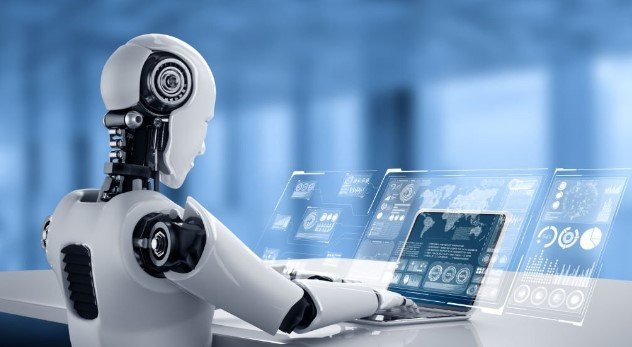Exploring the Cutting- Edge Innovations and Their Impact on Industry and Society
Artificial intelligence( AI) and robotics have seen exponential development in later years, driven by progresses in machine education, sensor technology, and computational power. As we approach 2025, the emulsion of AI and mechanical autonomy is set to reexamine businesses, upgrade human capabilities, and present modern moral and societal challenges. This review delves into the crucial trends and prognostications for the future of AI in robotics, offering perceptivity into how this powerful combination will shape the world in the coming years.
The Rise of Autonomous Robots
One of the most critical patterns in the AI- robotics space is the including independence of robots. Autonomous robots, able of working without human mediation, are getting more modern, much appreciated to headways in AI. By 2025, we can expect to see these robots performing a more extensive run of assignments over colorful divisions.
1. Industrial Automation
Autonomous robots are already transubstantiating manufacturing processes, and this trend will only accelerate. AI- powered robots are anticipated to take on more complex tasks, similar as quality control, prophetic conservation, and indeed decision- making places in product lines. The integration of AI with robotics will allow for real- time optimization, reducing time-out and adding effectiveness. This will lead to” smart manufactories” where human intervention is minimum, and robots communicate with each other to streamline operations.
2. Healthcare Revolution
In healthcare, independent robots are prognosticated to play a pivotal part in surgery, diagnostics, and patient care. AI- driven surgical robots will come more precise, able of performing minimally invasive procedures with high delicacy. also, robots will help in senior care, offering fellowship, covering health parameters, and even performing routine tasks like drug administration. The integration of AI’ll enable these robots to learn and acclimatize to individual case requirements, providing substantiated care.
AI- Enhanced Collaborative Robots( Cobots)
Cooperative robots, or cobots, are planned to work nearby people, upgrading efficiency and security. By 2025, AI’ll altogether boost the capabilities of cobots, making them more natural and versatile to different work environment.
1. Adaptive Learning and Interaction
AI- powered cobots will come more complete at understanding and responding to human conduct and commands. With advancements in natural language processing( NLP) and computer vision, these robots will be suitable to interpret complex instructions and acclimatize to changing circumstances in real time. This will make them inestimable in surroundings where human- robot collaboration is essential, similar as assembly lines, laboratories, and storages.
2. Safety and Compliance
Safety is paramount when humans and robots partake the same workspace. By 2025, AI’ll enhance cobots’ capability to descry and avoid implicit hazards, icing a safer working environment. Advanced AI algorithms will enable these robots to learn from once relations, continuously perfecting their safety protocols and compliance with assiduity norms.
AI in Robotics for Smart metropolises
As urbanization continues to rise, AI and robotics will play a imperative portion in the development of smart cities. By 2025, we can expect to see robots coordinates into the texture of civic life, contributing to different aspects of city operation and everyday living.
1. Urban Mobility
AI- driven robots will revise civic mobility, particularly in the realm of independent vehicles. tone- driving buses and drones will come more current, offering effective,eco-friendly transportation results. AI’ll enable these vehicles to navigate complex civic surroundings, avoiding obstacles, clinging to business regulations, and optimizing routes in real time. This wo n’t only reduce business traffic but also lower carbon emigrations, contributing to further sustainable metropolises.
2. Infrastructure Maintenance
Maintaining civic infrastructure is a daunting task, but AI- powered robots are set to change that. By 2025, robots equipped with AI’ll be stationed to check and maintain critical infrastructure, similar as islands, coverts, and mileage networks. These robots will use AI to descry wear and tear and gash, prognosticate implicit failures, and carry out repairs autonomously. This visionary approach will extend the lifetime of structure and reduce conservation costs for cities.
3. Public Safety and Security
Robots will also play a significant part in enhancing public safety. AI- driven security robots will patrol public spaces, monitor crowds, and identify suspicious conditioning. These robots will be equipped with advanced facial recognition, behavioral analysis, and communication systems, allowing them to work alongside law enforcement agencies. By 2025, these robots could come a common sight in airfields, shopping centers, and other public venues, furnishing an additional subcaste of security.
The Ethical and Social Implications of AI in Robotics
While the advancements in AI and robotics are instigative, they also raise important ethical and social questions. By 2025, these enterprises will come more pressing as robots come more integrated into our lives.
1. Job Displacement and Economic Impact
One of the most significant enterprises is the eventuality for job displacement as robots take on tasks traditionally performed by humans. While AI and robotics will create new jobs, particularly in technology and engineering, numerous workers may find their skills obsolete. This could lead to profitable difference and social uneasiness if not addressed proactively. Governments and businesses will need to invest in retraining programs and create programs that support workers transitioning to new places.
2. Privacy and Security
As AI- driven robots collect and dissect vast amounts of data, enterprises about sequestration and security will consolidate. By 2025, regulations and fabrics will need to be in place to insure that data collected by robots is used immorally and securely. This will be particularly important in sectors like healthcare and public safety, where sensitive particular information is involved.
3. Ethical Decision- Making
AI- powered robots will decreasingly be needed to make opinions with ethical counteraccusations , similar as prioritizing safety in independent vehicles or making healthcare opinions. icing that these opinions align with societal values and ethical norms will be a major challenge. By 2025, there will probably be a drive for lesser translucency and responsibility in AI decision- making processes, with interdisciplinary collaboration among ethicists, technologists, and policymakers.
Conclusion
The future of AI in robotics is full of pledge and eventuality. By 2025, we will see independent robots transforming diligence, cobots enhancing human capabilities, and AI- powered robots contributing to the development of smart cities. still, these advancements also bring significant challenges that society must address, from job displacement to ethical decision- timber. As we move forward, it’ll be pivotal to balance invention with responsible development, ensuring that AI in robotics benefits all of humanity.



